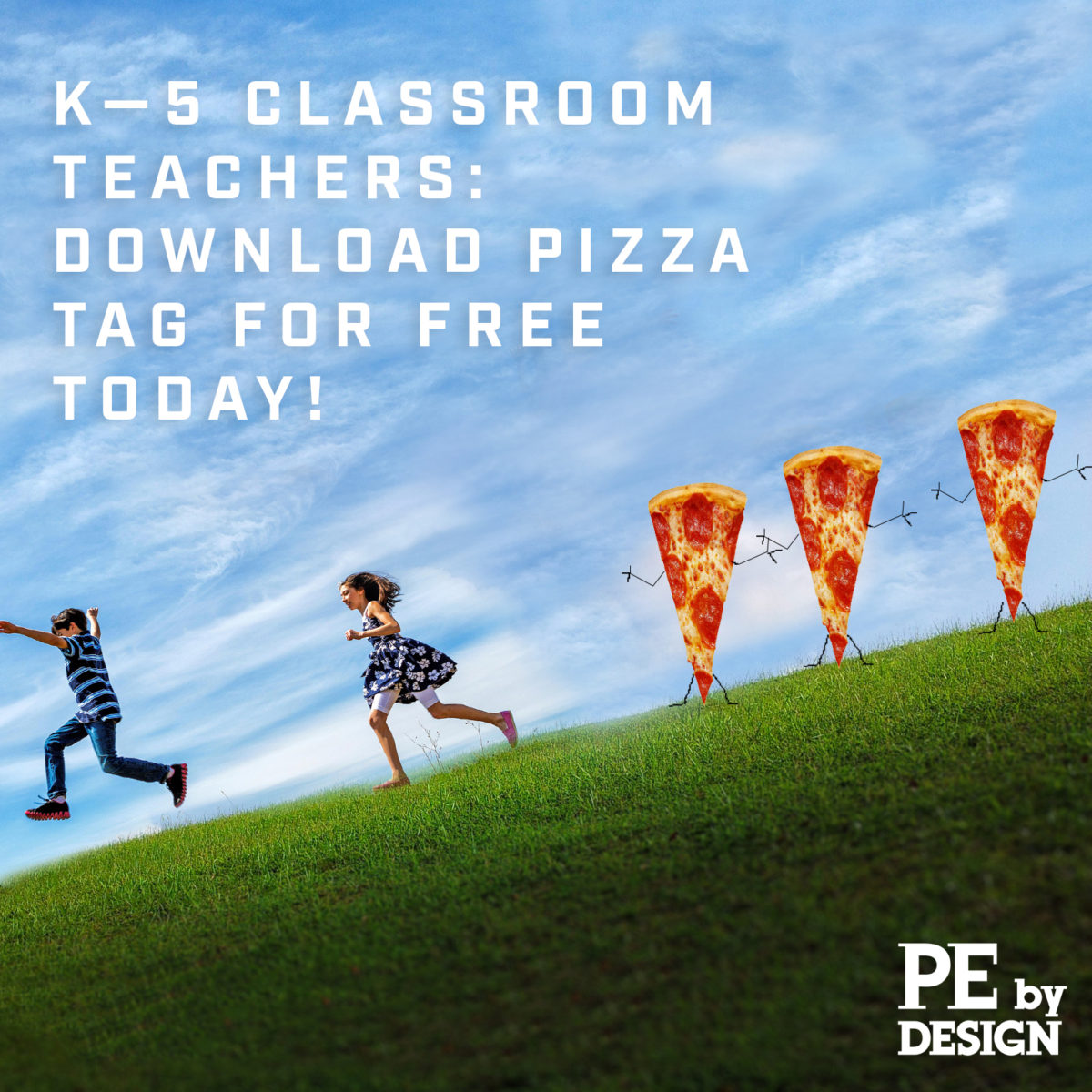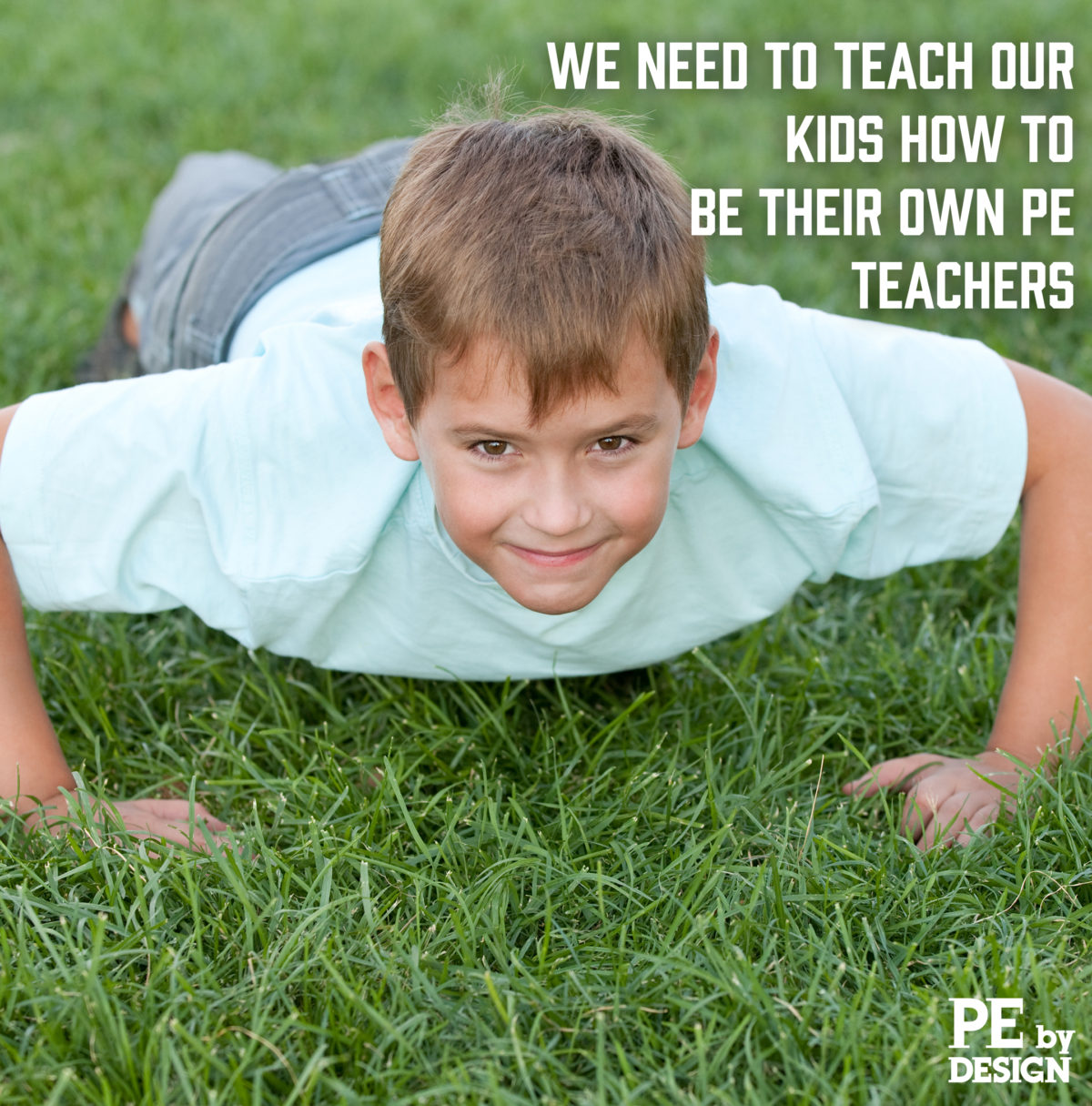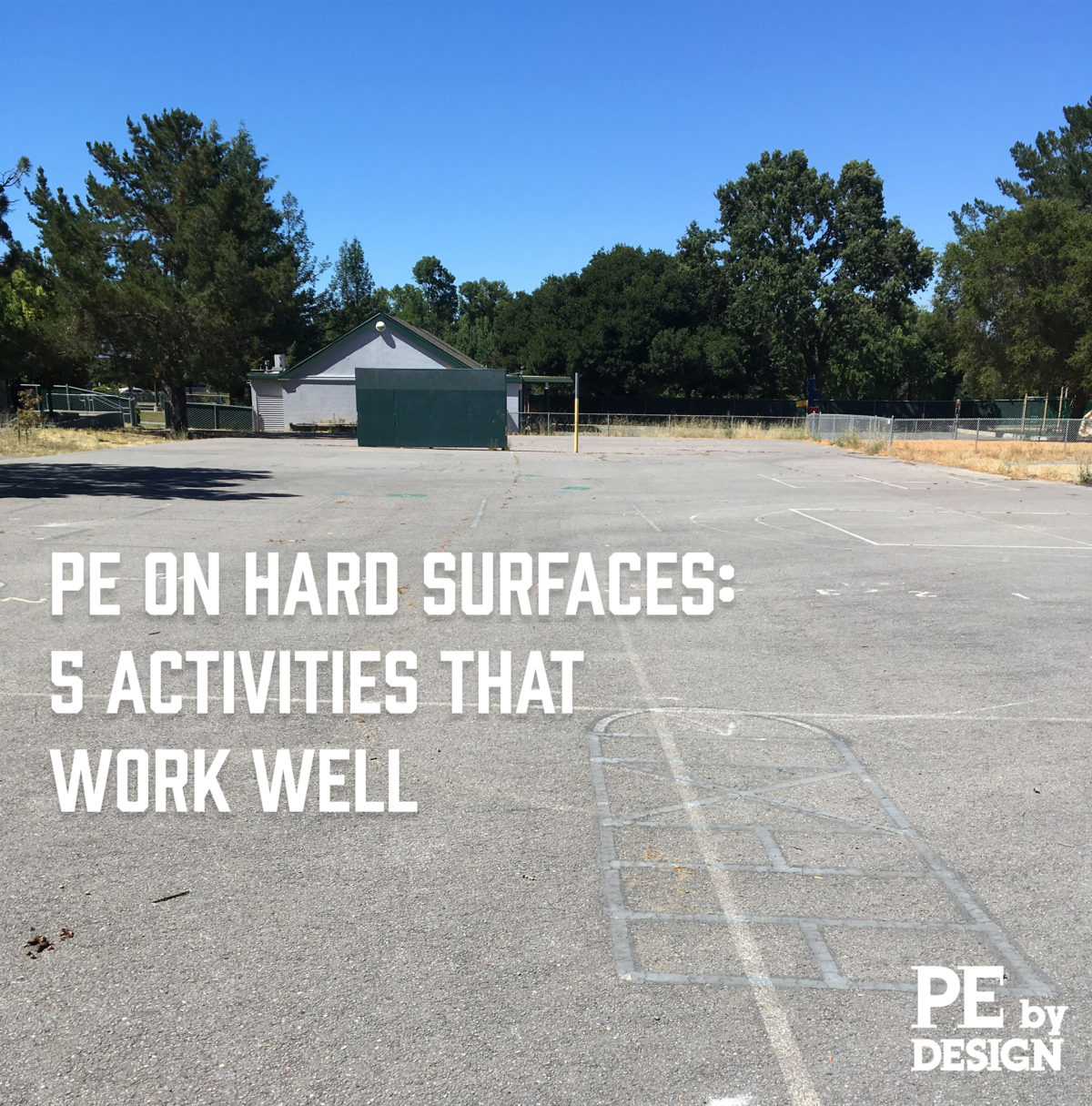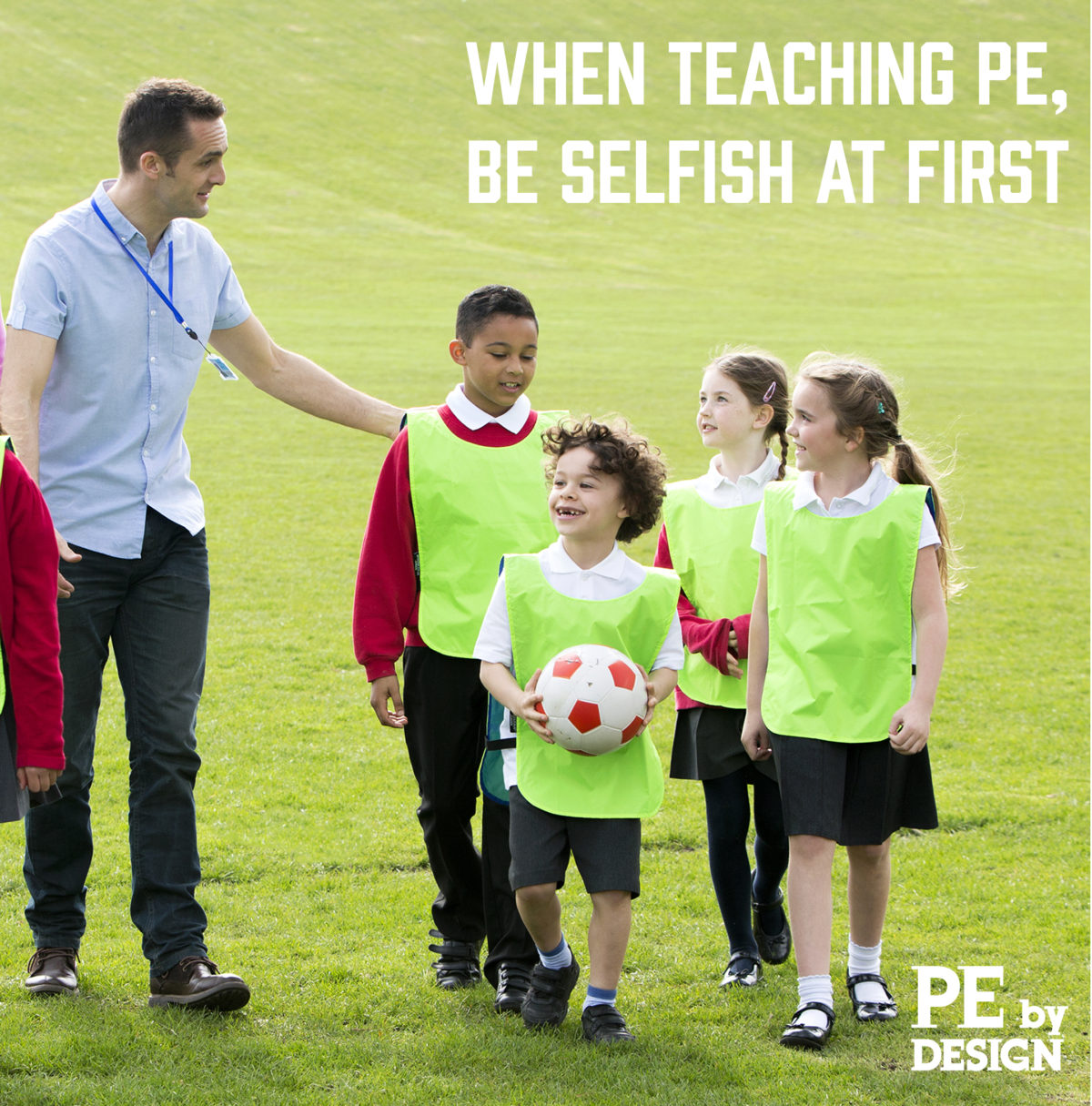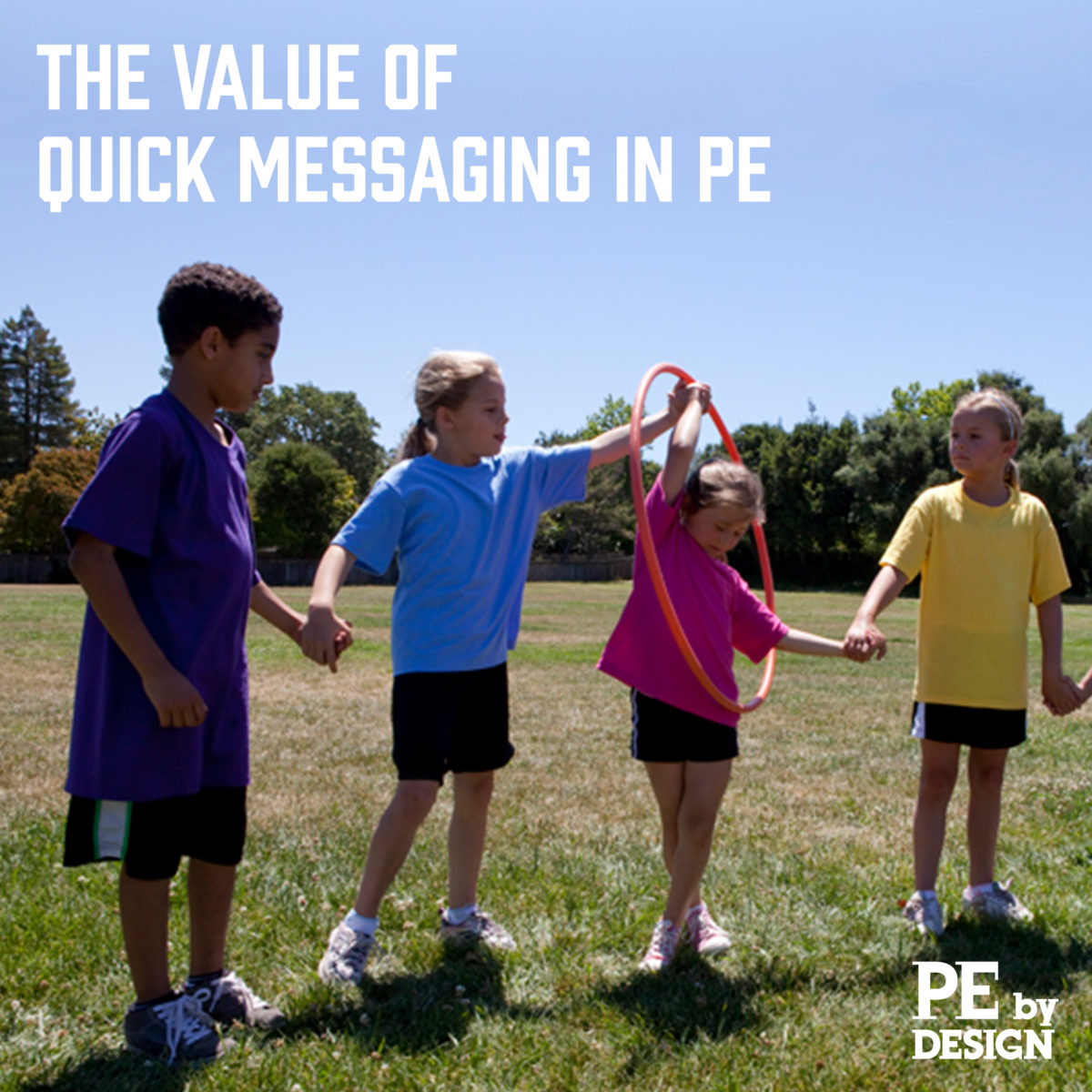Feel free to download Pizza Tag for free, from PE by Design. Click here for the free download.
Month: July 2017
Teaching Students to Be Their Own PE Teachers
In recent months, I’ve started sharing a new message with my students. It goes something like this:
“Boys and girls, you all know that I am your PE teacher right now. It’s my job to teach you how important it is to eat well and exercise. In the coming years, you will certainly have other PE teachers. But eventually, after you finish school and you become an adult, someone else is going to become your PE Teacher. And this person is going to be your PE teacher for the rest of your lives. Who do you think that person is?”
By the end of the statement, most of my older students (4th and 5th grade) realize what my point is. Eventually, you will all become PE teachers for yourselves. Whenever I share this message with my students, it’s amazing how focused they get. They seem to grasp the enormity of the responsibility. One day, they are going to be in charge of taking care of themselves.
As I explain the message further, I say that eventually, there will be no school-based PE teacher to set up fitness activities for them. It’s going to be up to them to choose to get involved in exercise. It’s also going to be up to them—not their parents—to choose healthy foods to eat. I also say that the simplest PE messages I give them are the most important: Try to get 60 minutes of physical activity each day; pick fitness activities that you enjoy; eat healthy foods, and avoid soft drinks.
I think the concept of personal responsibility for health and fitness is an important one for classroom teachers to share with their students. It makes an excellent starting point for a class discussion on ways that your students can be great PE teachers for themselves one day.
The More I Eat, the Hungrier I Get: Food Wisdom from a 4-Year-Old
Several months ago, I spent some time at a friend’s house. His 4-year-old son was walking around the kitchen, enjoying some crackers for a snack. I won’t name the cracker, but I’d classify it as junk food. As the boy enjoyed his snack, he paused and made a very interesting comment: “The more I eat, the hungrier I get.”
Even at 4 years old, my friend’s son recognized one of the key features of the unhealthy junk-food items found in the dessert and snack aisles of our supermarkets. These foods—including those crackers—are extremely high in refined carbohydrates, which break down quickly into sugar after you eat them. At the same time, there is little useful nutrition in these foods. Eating these foods produces a “sugar rush” that makes you want even more. In other words, these foods not only taste great, they make you feel great too! But only for a minute. You need to keep eating to keep having that great feeling. And this 4-year-old boy, not even in kindergarten yet, was able to verbalize this situation beautifully.
Finding Hidden PE Gems
About 5 years ago, a friend of mine named Carolyn retired from teaching. Carolyn was a classroom teacher for over 30 years, and we taught together for several years before she retired. Traditionally at my school, the final teaching day is followed by a check-out day during which teachers pack up their belongings and turn in their keys. On the cleanup day following Carolyn’s final day of teaching, she approached me with a box full of materials. “Here you go—this may be useful to you.” The box was full of PE resources that she had accumulated through the years, including the exercise cards in the photograph below. Carolyn told me that the box had been stored away, and she had forgotten about its contents.
I learned a valuable lesson from Carolyn that day. Teachers accumulate materials over the course of their teaching careers. You might be surprised by some of the valuable materials they have. Talk with your colleagues. There may be some hidden PE gems among their belongings!
PE on Hard Surfaces: 5 Activities that Work Well
Most of the activities in the PE by Design program work best on grass. But many schools have no grass field. Even when there is a field, it is often too wet to use. In these situations, the blacktop (or a concrete area) is the only available outdoor surface on which to hold a PE class.
A hard surface is perfectly acceptable for most PE activities. (One big exception: I avoid conducting most tag games on the blacktop.) However, I always remind students to stay alert and be more careful during any games played on the blacktop.
The PE by Design website offers many activities that students can perform on the blacktop. Here are my top five favorites. They all emphasize movement, so your students will get great exercise with these activities.
You will need painted playground lines for this tag game. Students follow the lines as they run. Be sure to remind them to move safely and look out for objects on the blacktop.
Jump Rope is ideal for the blacktop. The website offers three types of jump-rope activities.
You will need a painted circle for this activity. Direct your students to perform a variety of exercises as they move around the circle.
Print the strength-exercise cards that are part of the PDF. Choose cards randomly, and have your students perform the selected exercises on the blacktop.
You will need foursquare courts for this activity. Your students safely chase each other while following the foursquare court lines.
At First, Be Selfish
If there is one behavior trait that’s taboo for teachers it’s selfishness. However, as classroom teachers acquaint themselves with the process of teaching physical education, I think it’s important for them to put their needs first. I know this sounds heretical, but give me a chance to explain.
Over the course of my career, I have met many classroom teachers who find teaching physical education a challenge. Some flatly refuse to bring their students out for PE—ever. Others offer their students an extended recess, but provide no instruction. Talking with these reluctant teachers, I’ve realized that a lot of their discomfort stems from the process of conducting a PE session—selecting activities, gathering equipment, transitioning their students out to the yard, and initiating the activity. So much goes into making this all work, and each step presents challenges.
We need classroom teachers to get involved in teaching PE, so I encourage them to make the experience of teaching PE as easy for themselves as possible. This “selfish behavior” is perfectly acceptable for classroom teachers as long as the experience is a good one for their students.
Do you feel reluctant about teaching PE? Here are two tips to ease the burden.
- Start with short PE periods. Children should get 60 minutes of exercise per day, but you can break that 60 minutes into small chunks. Even 10 minutes of physical activity is good for kids.
- Focus on activities that require minimal equipment. It takes time and effort to organize equipment, bring it out to the yard, set it up, and put it away. PE by Design offers many activities that require no equipment at all.
Once you get comfortable with the routine of conducting a PE session, you can extend your PE periods, offer a wider variety of activities, and refocus on putting your students first!
The Value of Quick Messaging in PE
Teaching physical education involves more than just getting your students moving. You also want to give them useful health and fitness information. Classroom teachers may have limited time for diving deeply into PE concepts with their students. I teach PE full-time, and I still need to balance time spent discussing health concepts with time spent engaging in activities. A tool I call quick messaging is an important part of my program, and it’s a great tool for classroom teachers as well. A quick message is a health fact or a brief statement about fitness that ties in with the activities your students are doing or are about to do.
The idea is to use short statements—easy-to-grasp concepts—that you can repeat throughout the school year. Here’s an example. You are about to initiate a tag game with your students. You could say, “Children are supposed to get 60 minutes of exercise per day, and we will be working towards that goal in this activity.” Referring to the 60-minutes guideline is a great quick message. It’s a crucial concept, it’s easy to state quickly, and you can repeat it often throughout the year.
I’ve identified five key health messages for children that you can use to kick-start your quick-messaging campaign. Three relate to fitness, the other two relate to diet.
- You should do at least 60 minutes of physical activity every day.
- You need to get 60 minutes of exercise a day, but you don’t have to do it all at once—do 5 minutes here, 10 minutes there—it all adds up.
- Physical activity should be fun. Choose things you like to do.
- Eat plenty of fruit and vegetables, but keep those salty, sugary, processed foods to a minimum.
- Avoid soft drinks.
Don’t limit yourself to the PE setting when you share these messages. If you observe a group of students with healthy lunches, you might say to the class, “these students did not have a soda with their lunches—good choice!”
The long-term health of your students will depend more on the choices they make after they leave elementary school than the activities they participate in as elementary students. Equipping them with an understanding of how to make healthy choices as they move through life is extremely important. By focusing on these quick health messages repeatedly, you help give your students the knowledge they need to make healthy choices.

